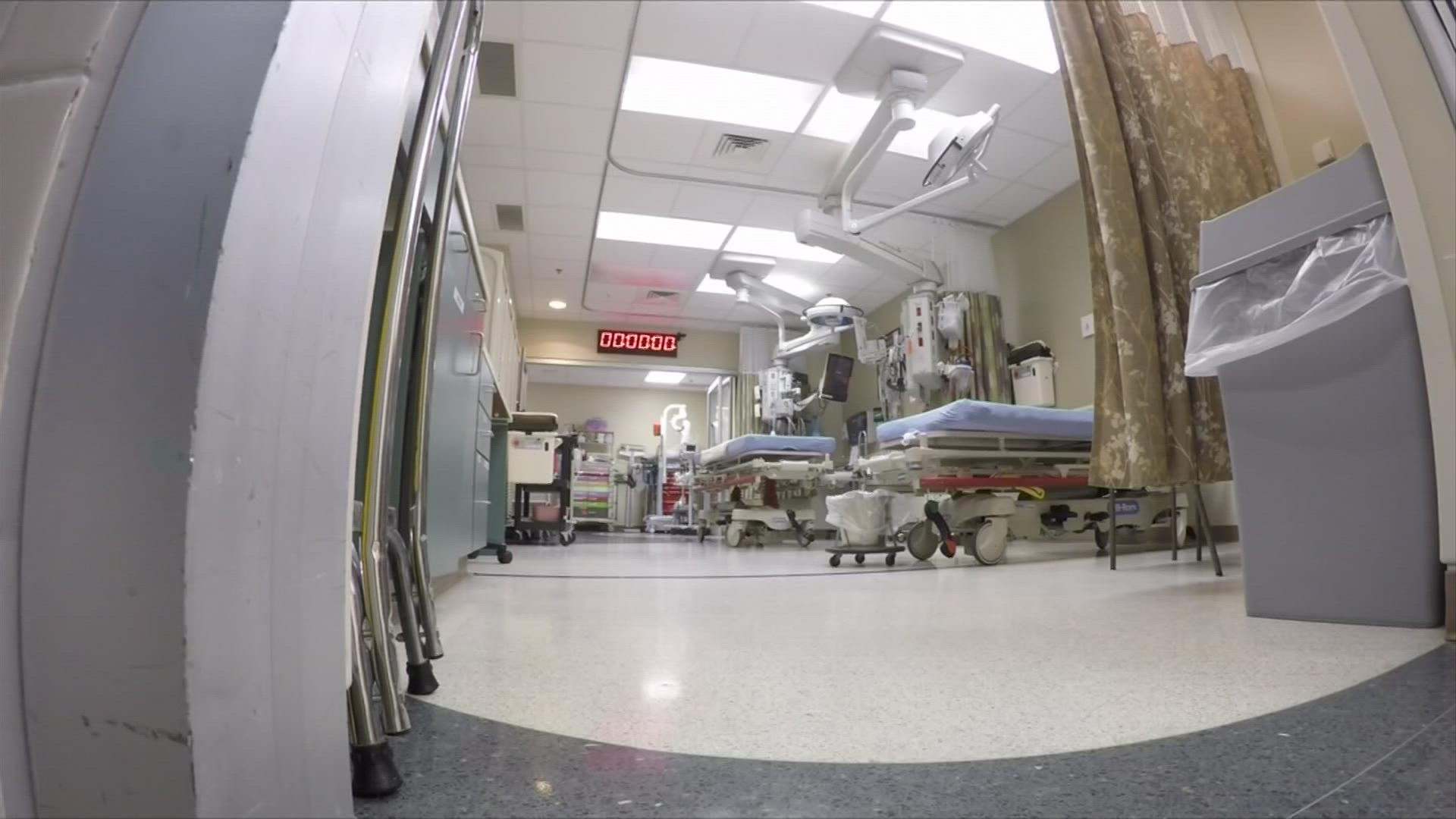OHIO, USA — Right now in Ohio when it comes to the average number of new COVID hospitalizations daily, that average is less than 300 a day.
However, on Tuesday, the state health department reported 612 new hospitalizations. It’s the most in one day in nearly a year.
The stress on hospitals is mounting and it’s affecting emergency rooms right now in particular.
Now health leaders are asking people to reconsider if they really need to go to the emergency room when a medical need arises.
The burden on emergency rooms is said to be due to COVID and other reasons.
"Just in the matter of the last week, we've seen emergency rooms, particularly in areas like Lima and Toledo, Cleveland area, outside Canton and Akron. It's really just becoming more and more of an issue,” said John Palmer from the Ohio Hospital Association.
Palmer said it’s leading to long wait times.
OHA is asking people to get vaccinated and re-evaluate their symptoms before going to the ER.
For these situations, you should seek an urgent care walk-in clinic instead:
- a sprained ankle
- sore throat
- nausea
- minor cuts
- minor burns
You will need the ER if you're experiencing something more severe like:
- an extremely high fever
- broken bones
- uncontrolled bleeding
- trouble breathing
- major burns
- a heart attack or stroke
"What is occurring in the ICU side of things is very alarming,” Palmer said.
According to OHA's statewide data, COVID is also the reason a third of patients are in intensive care.
“This week, we're expecting to see any kind of outcome from the Thanksgiving Day holiday,” he said.
So while we wait to see what that means for case numbers - it may take longer to see if it will add even more to the hospital strain.
In an emailed response to 10TV, Dr. Daniel Bachmann who specializes in emergency medicine at the Ohio State University Wexner Medical Center wrote in part, "positive cases are often identified early in the illness and hospitalization may not occur until later in the illness."
"Every morning we're just kind of checking the numbers that are coming in and in the data that's coming in, and then working with all of our partners to make sure that healthcare services aren't disrupted in the state,” Palmer added. “There's a lot of states out there that are making very tough decisions."

